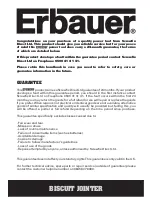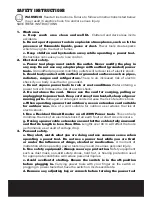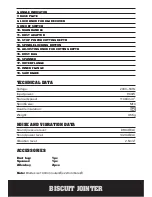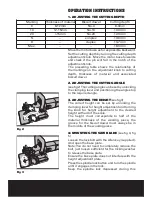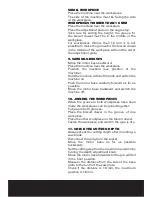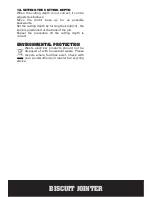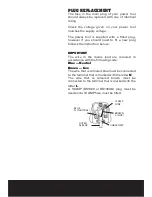
BISCUIT JOINTER
procedure!
Remove the outer flange from the spindle using
the spanner supplied.
Position the saw blade on the inner flange. Place
the outer flange on the
Spindle and tighten it fully with the spanner.
Take care that the outer flange is placed
with the correct side to the spindle
Release the spindle lock and check that the spindle
is unlocked by rotating it.
Close the top of the base plate and tighten the
Allen key fully.
Note: Ensure the lock washer is located correctly
and that the base is closed and secure.
5. MOUNTING DUST BAG
(see fig6)
For dust extraction the dust bag can be
used. Insert the dust bag into the vacuuming
connection. Empty the dust bag regularly so that
the vacuuming performance remains intact.
6. SWITCH
To start the biscuit jointer, push the slider switch
forward. For continuous operation, push the
slider switch forward and push the front down
until it locates in the lock position. To turn the tool
off, press the rear of the slider switch, the spring
action returns the switch to the off position.
7. MARKING THE WORKPIECES
(see fig7)
Before starting with the Biscuit Jointer the
workpieces must be marked as follows:
Place the two workpieces which to be connected,
on top of each other.
Clamp the workpieces and mark the centre of the
biscuit groove on the workpieces.
On large workpieces the space between biscuit
joints should be 10-15cm.
8. POSITIONING OF THE MACHINE
Based on the size of the workpieces the machine
can be positioned in several ways.
LARGE WORKPIECES
Place the machine near the workpieces.
The middle of the base plate (this point is marked
on the base plate) must face the centre of biscuit
joint position in the workpiece (see marking the
workpiece)
�������
Fig 5
Fig 6
Fig 7
�������
�������
�������
Fig 4
Loosen
Tighten



